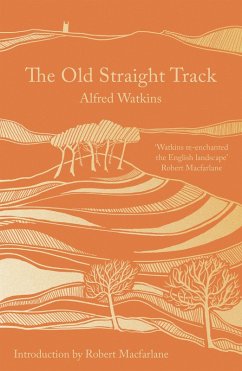A beautiful new edition of a classic work of landscape history, in which Alfred Watkins introduced the idea of ancient 'ley lines' criss-crossing the English countryside.
First published in 1925, THE OLD STRAIGHT TRACK described the author's theory of 'ley lines', pre-Roman pathways consisting of aligned stone circles and prehistoric mounds, used by our Neolithic ancestors.
Watkins's ideas have intrigued and inspired generations of readers - from historians to hill walkers, and from amateur archaeologists to new-age occultists.
This edition of THE OLD STRAIGHT TRACK, with a substantial introduction by Robert Macfarlane, will appeal to all who treasure the history, contours and mystery of Britain's ancient landscapes.
First published in 1925, THE OLD STRAIGHT TRACK described the author's theory of 'ley lines', pre-Roman pathways consisting of aligned stone circles and prehistoric mounds, used by our Neolithic ancestors.
Watkins's ideas have intrigued and inspired generations of readers - from historians to hill walkers, and from amateur archaeologists to new-age occultists.
This edition of THE OLD STRAIGHT TRACK, with a substantial introduction by Robert Macfarlane, will appeal to all who treasure the history, contours and mystery of Britain's ancient landscapes.

